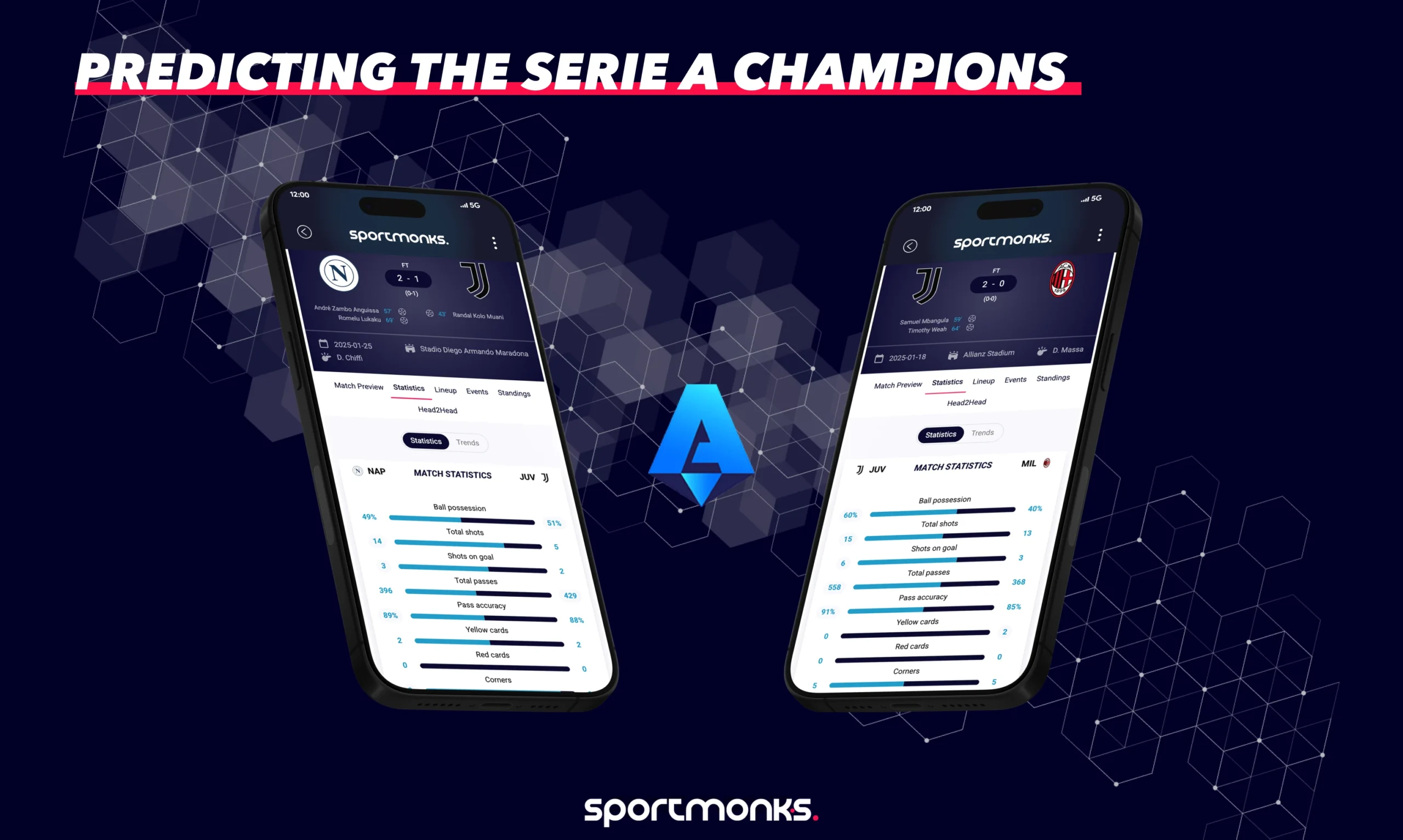
Contents
History of Serie A
Italian football has a long and storied past, with organized competitions dating back to the late 19th century. Serie A, as we know it today, has evolved significantly over time. While various regional leagues existed earlier, the modern format began to take shape in the late 1920s.
Key milestones in Serie A’s history
– 1898: The first Italian Football Championship was held, organised by the Federazione Italiana del Football (FIF). This marks the beginning of organised football in Italy.
– 1929-30: The first season of Serie A under its current format, a single national league, is played. Ambrosiana-Inter won the inaugural title.
– 1940s: The “Grande Torino” era, a period of dominance for Torino FC, tragically cut short by the Superga air disaster in 1949.
– 1950s and 1960s: The rise of AC Milan and Inter Milan, establishing their rivalry and beginning a period of success for both clubs.
– 1980s and 1990s: A golden age for Serie A, attracting some of the world’s best players and becoming arguably the top league in the world. This era saw the rise of clubs like AC Milan under Arrigo Sacchi and Fabio Capello, and Juventus’s continued dominance.
– Early 2000s: A period of continued success for Italian clubs in European competitions, but also marked by controversies like Calciopoli (a match-fixing scandaal).
– 2010s: Juventus’s dominance, winning nine consecutive Serie A titles from 2012 to 2020.
Structure and format of Serie A
Serie A features 20 clubs competing in a double round-robin format. Each team plays every other team twice—once at home and once away—resulting in a total of 38 matches per season. The Serie A season typically runs from August to May.
– Points system: Teams earn 3 points for a win, 1 point for a draw, and 0 points for a loss.
– League table: Teams are ranked in a league table based on their accumulated points. Tie-breakers, in order, are: head-to-head points, head-to-head goal difference, overall goal difference and goals scored
– European competitions qualification: The top four teams in Serie A qualify for the UEFA Champions League group stage. The fifth-placed team qualifies for the UEFA Europa League group stage. The winner of the Coppa Italia (the Italian domestic cup competition) also qualifies for the Europa League group stage. The sixth-placed team qualifies for the UEFA Europa Conference League Play-off round.
– Relegation: The bottom three teams in the league table at the end of the season are relegated to Serie B, the second tier of Italian football. They are replaced by the top two teams from Serie B (automatically promoted) and the winner of a promotion play-off involving the teams finishing from third to eighth in Serie B.
Key teams in Serie A
Serie A boasts a rich collection of clubs with storied histories and passionate fanbases. While the league is known for its competitive balance, several teams have consistently played a major role in shaping Italian football.
– Juventus: The most successful club in Serie A history, Juventus has won the Scudetto (Serie A title) 36 times (38 including the two revoked titles). Known for their defensive solidity and tactical discipline, Juventus has been a dominant force in Italian football for much of its history. They have also won the Champions League twice (1984-85 and 1995-96) and the Europa League thrice (1976-77, 1989-90 and 1992-93).
– AC Milan: One of the most prestigious clubs in world football, AC Milan has won Serie A 19 times and the Champions League seven times. Known for their attacking flair and legendary players like Marco van Basten, Ruud Gullit, and Frank Rijkaard in the late 80s and early 90s, and Paolo Maldini, Franco Baresi, and Alessandro Nesta in the late 90s and early 2000s, Milan has a rich history of success.
– Inter Milan: AC Milan’s city rivals, Inter Milan, have also won Serie A 19 times and the Champions League three times. The “Derby della Madonnina” between the two Milan clubs is one of the most passionate derbies in world football. Known for their tactical flexibility and legendary players like Giuseppe Meazza (after whom the San Siro stadium is co-named) in the early days, Sandro Mazzola and Giacinto Facchetti during the Grande Inter era in the 1960s, and more recently Javier Zanetti, whose loyalty and versatility made him a club icon.
– AS Roma: While not as consistently successful as the Milan clubs or Juventus, AS Roma is a historically significant club with a passionate fanbase. They have won Serie A three times and are known for their attacking style and iconic players like Francesco Totti (L’Ottavo Re di Roma “The Eighth King of Rome”).
– Lazio: Another Rome-based club, Lazio has won Serie A twice and is known for its passionate and sometimes controversial fanbase. The “Derby della Capitale” between Roma and Lazio is another intense rivalry in Italian football.
– Napoli: After many years outside the top spots, Napoli has re-emerged as a major force in recent years, winning Serie A in 2023 for the first time since a Diego Maradona led Napoli won it 33 years ago. They are known for their attacking football and passionate southern Italian support.
Famous players in Serie A
Serie A has been graced by some of the greatest footballers in history, renowned for their tactical intelligence, defensive prowess, and attacking flair. From legendary figures who defined eras to current stars captivating audiences, these players have contributed greatly to Serie A’s global appeal.
Iconic players of the past
– Diego Maradona (Napoli): More than just a player, Maradona was a phenomenon, a symbol of hope for Naples. His “Hand of God” goal and the breathtaking “Goal of the Century” against England in the 1986 World Cup defined his maverick spirit. In Naples, he was a king, bringing two Serie A titles that made fans believe in miracles, his electric personality igniting an undying love affair with the city. His presence on the pitch was a spectacle, a joy that transcended football, turning every match into a carnival.
– Paolo Maldini (AC Milan): His name alone stirs feelings of reliability, elegance, and class. For over two decades, Maldini was the embodiment of AC Milan’s defensive solidity, his calm demeanor on the field providing comfort and pride to fans. His loyalty and grace under pressure made him a legend, a figure fans could look up to, not just for his skills but for his character.
– Franco Baresi (AC Milan): Baresi wasn’t just a defender; he was a guardian, the heart of Milan’s defence. His tactical intelligence and leadership brought a sense of security to fans, transforming every game into a masterclass of defending. His nickname, “Piscinin” (Little One), belied the giant shadow he cast over Serie A, his performances a source of immense pride and joy for Milan supporters.
– Gianni Rivera (AC Milan): Known as “The Golden Boy,” Rivera’s playmaking was like poetry on the pitch, his vision creating moments of pure ecstasy for fans. His elegance and intelligence in midfield made watching Milan a joy, his contributions to the club’s golden era in the ’60s and ’70s still resonate with fans who remember his magical passes.
– Valentino Mazzola (Torino): The captain of “Il Grande Torino,” Mazzola was more than a player; he was a beacon of hope and pride in post-war Italy. His tragic death in the Superga air disaster left a void in the hearts of Italian football lovers, his legacy one of leadership, passion, and the essence of what it means to be a team player.
– Marco van Basten (AC Milan): With his balletic movements and lethal finishing, Van Basten brought a sense of awe and beauty to the game. His goals, often spectacular, were moments of pure joy, his performances part of Milan’s unforgettable Dutch trio, leaving fans with memories of a striker who seemed to score the impossible.
– Silvio Piola (Lazio, Juventus): A goal-scoring machine whose records speak volumes (bagging over 270 goals in Italy) , Piola’s legacy is one of consistency and excellence, bringing smiles to fans across multiple clubs. His name evokes an era where football was simple, yet profound, his goals a testament to the joy of scoring.
– Zinedine Zidane (Juventus): Before he was a coaching legend (notably at Real Madrid), Zidane mesmerized Serie A with his artistry. His time at Juventus was like watching a painter at work, his control and vision bringing moments of brilliance that left fans in awe, his play a celebration of football’s beauty.
– Francesco Totti (AS Roma):”Il Capitano,” Totti’s love for Roma was palpable, his loyalty creating a bond with fans that transcended sport. His iconic moments, like the last-minute goal against Lazio, are etched in Roman folklore, his career a testament to passion, dedication, and the pure joy of playing for one’s hometown club. A perhaps underrated part of his career was how prolific he was, with over 300 goals and 200 assists in Italy.
Current stars
– Victor Osimhen (Napoli): Currently on loan at Galatasaray, his explosive pace and clinical finishing have reinvigorated Napoli, bringing back the thrill of Maradona’s era, with fans feeling a renewed sense of hope and celebration with each goal. His performances have kept Napoli fans dreaming of more titles.
– Lautaro Martínez (Inter Milan): His dynamic play and passion on the field have rekindled the fire in Inter’s supporters, providing moments of pure elation with his goals and teamwork, embodying the spirit of the club.
– Nicolò Barella (Inter Milan): A midfielder known for his tireless energy, technical ability, and vision, Barella has become a cornerstone of Inter’s midfield. His performances have endeared him to fans, showcasing the blend of modern football’s demands with classic Italian football intelligence.
– Ademola Lookman (Atalanta): An English-born Nigerian winger who has found a new life in Italy. Lookman’s speed, dribbling, and knack for scoring crucial goals have made him a fan favorite at Atalanta. His flair and unpredictability on the wing have brought joy to a club known for its attacking philosophy.
– Alessandro Bastoni (Inter Milan): A central defender known for his ball-playing abilities and defensive solidity, Bastoni has become an integral part of Inter Milan’s backline. His ability to contribute to the attack from deep positions, combined with his precise passing and reading of the game, has made him one of the standout defenders in Serie A
– Rafael Leão (AC Milan): With his flair and speed, Leão has brought back the excitement of watching Milan attack. His development into one of Europe’s most exciting talents has been a source of immense pride for Milanisti, all while doing it with a smile on his face.
International impact of Serie A
Serie A clubs have played a significant role in shaping European and global football, both through their successes in continental competitions and the influence of their distinctive tactical approaches.
UEFA Champions League/European cup
– AC Milan: With seven Champions League/European Cup titles, AC Milan is the second most successful club in the competition’s history (behind Real Madrid at 15). Their triumphs, particularly in the late 1980s and early 1990s, set a benchmark for attacking, possession-based football.
– Inter Milan: Inter Milan has won the Champions League/European Cup three times, including their treble-winning season in 2010 under José Mourinho.
– Juventus: Juventus has won the Champions League/European Cup twice, although they have also reached the final seven times, demonstrating their consistent presence at the highest level of European club football.
UEFA Europa League/UEFA Cup
– Juventus: Juventus has won the UEFA Cup three times.
– Inter Milan: Inter Milan has also won the UEFA Cup three times.
– Parma: Parma won the UEFA Cup twice in the 1990s.
Influence on playing style and tactics
Serie A has been particularly influential in the development of defensive tactics and strategies. The emphasis on organised defending, tactical discipline, and “catenaccio” (a highly organised defensive system) has had a lasting impact on global football. While “catenaccio” is less prevalent in its purest form today, the emphasis on defensive solidity and tactical awareness remains a hallmark of Italian football. In recent years, Serie A has seen a shift towards more attacking and possession-based styles of play, but tactical awareness and defensive organization are still key components.
Influence on player development
Serie A has also been a breeding ground for world-class talent, with many iconic players Alessandro Nesta and Andrea Pirlo developed into legends in the Italian league. More recently, stars like Gianluigi Donnarumma, who grew from a teenage sensation at AC Milan into one of the world’s top goalkeepers, and Federico Chiesa, whose flair and versatility was evident at Fiorentina before moving to Juventus.
The business of Serie A
Serie A is a major player in the global football economy, generating significant revenue through various commercial avenues. Understanding the business side of the league provides valuable context for its current state and future prospects.
– The importance of TV deals: Selling the rights to show matches on TV, both in Italy and around the world, is how Serie A makes a lot of its money. These TV deals bring in huge amounts, which are then shared between the clubs. This TV money is really important for how well Serie A can compete with other leagues, like the Premier League.
– Sponsorships: Sponsors are also really important for Serie A clubs. Companies pay to have their names on shirts, in stadiums, and in other ways. This sponsorship money helps clubs pay for players, improve their stadiums, and cover their running costs.
– The financial rules: Serie A clubs have to follow rules called “Financial Fair Play.” These rules are there to stop clubs from spending more money than they earn, which helps keep things stable.
– Club budgets: Some Serie A clubs, like Juventus and the two Milan teams, are famous around the world and have lots of money. Other clubs have much less to spend. Things like winning trophies, owning their stadium, having a strong brand, and getting sponsorships all affect how much a club is worth.
Important football data and Sportmonks Coverage
Currently, Serie A’s business extends beyond traditional revenue streams into football analytics, and Sportmonks is at the forefront of delivering this for Italy’s top flight. We offer a 14-day free trial across our subscriptions, letting users tap into Serie A’s rich tactical legacy—think live updates from the Derby d’Italia or advanced stats like xG that decode Inter’s defence. Our plans cater to varied needs: the European Plan, starting at around €39 monthly, includes Serie A among 27 European leagues; the Worldwide Plan, from about €129 monthly, covers 111 top leagues including Italy’s finest; the Enterprise Plan, with custom pricing, spans over 2,200 leagues for those craving comprehensive insights; and the Custom Plan lets you craft a package with Serie A at its heart. Billing monthly offers flexibility, while yearly payments trim costs, making it affordable to fuel media coverage, betting models, or fan passion. For anyone eager to analyse Italian football – Sportmonks’ data is your gateway—kick off your trial today.
FAQs about Serie A
- Derby della Madonnina (AC Milan vs. Inter Milan): The Milan derby is one of the most fiercely contested matches in Italy, with a long history and intense rivalry between the two Milan clubs.
- Derby della Capitale (AS Roma vs. Lazio): The Rome derby is another highly charged fixture, with strong local rivalries and passionate fanbases.
- Derby d'Italia (Juventus vs. Inter Milan): This rivalry is often considered the biggest in Italian football, pitting the two most successful clubs against each other.

